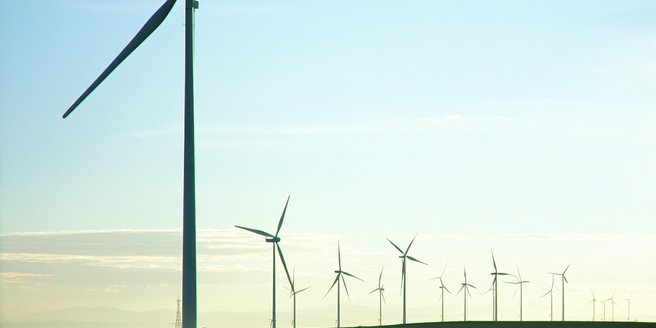
Understanding Wind Patterns: The Basics
Wind patterns are a fundamental aspect of meteorology and have profound implications for wind energy generation. Understanding these patterns involves examining how winds vary with time and location, influenced by factors like pressure gradients, earth rotation, and surface roughness. Wind speed and direction change through the day and seasons. Maps of prevailing winds help developers choose suitable sites for wind farms. Observational data collected through anemometers and satellite measurements are crucial in this analysis. Wind roses offer visual summaries, showing speed and frequency distributions across different directions. By understanding the regularity and variability of wind patterns, energy planners can better forecast potential power output, determining optimal turbine placement and operation. This foundational knowledge is key to maximizing energy production and ensuring the long-term sustainability of wind resources.
The Role of Geography in Wind Flow
Geography plays a critical role in determining wind flow patterns, affecting both the speed and direction of winds. Topographical features such as mountains, valleys, and plateaus can significantly influence wind behavior. For instance, wind tends to accelerate when funneled through narrow mountain passes, providing sites of higher energy potential. Coastal areas also experience unique wind patterns due to temperature differentials between land and sea, leading to seabreezes that enhance wind farm efficiency. On a larger scale, global circulation models consider the Coriolis effect, driven by Earth’s rotation, impacting trade winds and jet streams. Localized phenomena like urban heat islands modify wind flow in metropolitan areas. Understanding these geographical influences enables accurate predictions of wind behavior, essential for optimizing turbine placement and enhancing energy capture across varied landscapes.
Analyzing Data for Turbine Placement
Strategically analyzing wind data is imperative for optimizing turbine placement in a wind farm. The process begins with collecting on-site measurements using advanced meteorological instruments and remote sensing technologies. Data types include wind speed, direction, and turbulence intensity, gathered over long periods to ensure accuracy. Sophisticated models process this data to provide detailed wind resource maps, identifying areas of maximum energy potential. Computational fluid dynamics simulations further refine turbine layout, accounting for local topography and atmospheric conditions. Site-specific wind profiles inform decisions on turbine type, height, and spacing. By integrating historical data and predictive analytics, developers can identify trends and mitigate risks. This comprehensive data analysis ultimately ensures high energy yield, operational efficiency, and reduced environmental impact through informed turbine placement.
Technological Tools for Site Assessment
The advancement of technology has revolutionized site assessment for wind energy projects, enabling more precise and efficient evaluation processes. Remote sensing technologies, like LiDAR and SoDAR, offer accurate wind measurements at various altitudes, surpassing traditional anemometers. These tools provide essential data on wind speed, direction, and turbulence, crucial for determining site feasibility. Geographic Information System (GIS) mapping enhances the analysis by visualizing wind resources alongside environmental and regulatory constraints. Furthermore, advanced software tools for computational fluid dynamics (CFD) simulate complex interactions between wind and topography, optimizing turbine placement. Predictive modeling leverages historical data to forecast future wind behavior, while machine learning algorithms refine predictions and minimize uncertainties. Together, these technological tools drive data-driven site assessments, ensuring informed decision-making and maximizing the potential of wind energy projects.
Economic and Environmental Considerations
When evaluating sites for wind energy, economic and environmental factors play a crucial role in decision-making. The economic viability of a project is influenced by installation and maintenance costs, which are affected by location accessibility and infrastructure. Proximity to the grid reduces transmission costs, enhancing financial feasibility. Additionally, government incentives and policies impact investment returns. Environmentally, the potential impacts on wildlife, ecosystems, and local communities must be considered. Careful assessments ensure minimal disruption to migratory patterns and biodiversity. Visual and acoustic impacts on nearby residents are also evaluated to maintain social acceptance. Balancing these economic and environmental considerations is vital for sustainable wind energy deployment, fostering community support and ensuring regulatory compliance. Through holistic planning and stakeholder engagement, negative impacts are minimized while maximizing renewable energy benefits.
